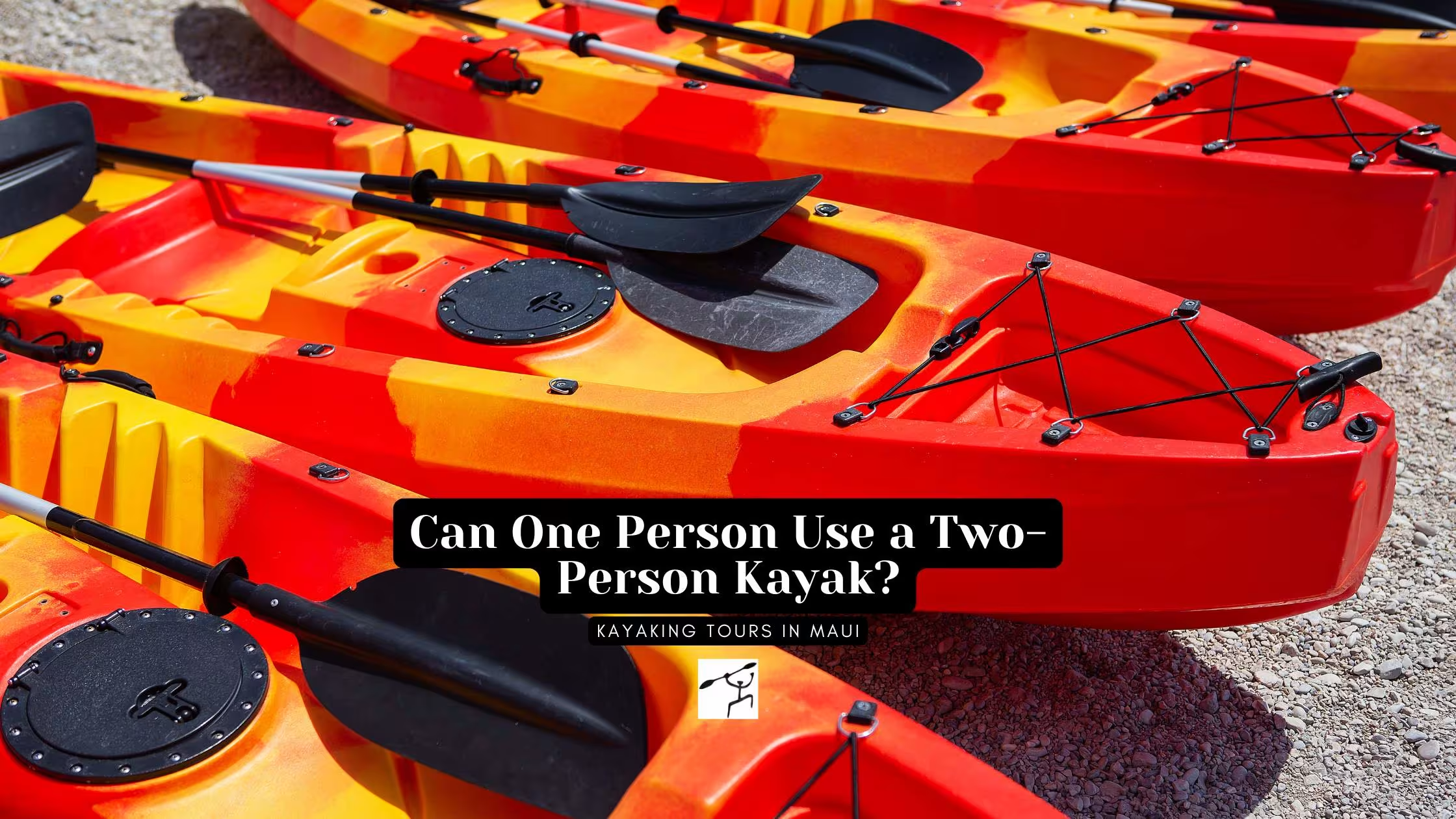
Can One Person Use a Two-Person Kayak?
Many weekend paddlers and casual novices find themselves asking whether a tandem kayak will work when they are the only one on the water. The short reply is yes, but a few practical details deserve thought. Whether you are drawn to these full-length boats for their extra room, future flexibility, or the simple fact that a friend may show up later, setting a two-person craft up for solo use is completely feasible and at times very advantageous.
Why Use a Two-Person Kayak Alone?
Several good reasons can push a solo paddler to choose a tandem. Perhaps a planned companion cancelled at the last moment, or maybe you expect a long outing that demands extra food, gear, or drinking water. Since most tandem hulls are wider they tend to track straighter, and the added cockpit volume gives generous leg space and stowage room that can feel luxurious on a day trip.
Can a Two-Person Kayak Be Paddled by Just One Person?
Definitely; a two-person kayak can be paddled solo, particularly if it is a sit-on-top recreational model. Because these craft are broad and sit high on the water, they retain stability even when the paddler leans to one side. Riders can either occupy the rear seat or slide toward the center many boats allow straps, foot rests, or simple molded pads to mark a catch-all midpoint.
Once the hull is rigid, however, weight placement becomes more critical. An angler-style tandem made of tough plastic can list sharply if the paddler perches too far forward or back, causing the bow to plow water and the stern to drag. Strapping extra gear, a dry bag half-filled with water, or even a five-litre bottle to the unused seat can sometimes straighten the course and make steering more responsive.
Can a Solo Paddler Use a Two-Person Inflatable Kayak?
Certainly; the question of whether a solo paddler can use a tandem inflatable kayak ranks among the most frequently typed boating queries. Because most inflatable tandems weigh less than fifty cost-effective kilograms, one person can vault them onto a car roof, lift them from a shed, or ferry them across a muddy trail. Even when sold as buddy boats, they usually ship adjustable straps or removable seats that let the paddler center the passenger’s weight over a defined inflation bin.
That ease is more than handy; it stretches trip options. Since the craft can be stored rolled in a closet or stuffed behind a back seat, yesterday’s spontaneous idea for an evening paddle does not require a trailer, stacker rack, or cousin with a truck. Solo paddlers living in compact flats, urban apartments, or retiree communities with space rules find that the inflatable tandem glides comfortably between the thrill of company and the convenience of going alone.
Things To Think About When Paddling a Tandem Kayak by Yourself
Weight Balance
When you sit only in the back, the bow tips up and the hull catches wind. Stashing a light bag or even loose rocks in the front compartment levels the ride.
Steering and Tracking
With one paddler, every stroke feels a little heavier and the bow may wander. Adding a rudder, if the boat has one, and keeping an even stroke make steering easier.
Length and Storage
Two-person boats stretch from twelve to sixteen feet, so they need more room to turn. On the upside, the extra space swallows lunch, a spare jacket, and even a dog.
Seat Adjustment
Most newer tandems let you slide the seat or swap parts, so moving it to the centre is a quick job. From there the kayak feels steadier, and a balanced stroke takes less effort.
Can You Take a Two-Person Kayak Out Alone on Long Trips?
Absolutely, and for some paddlers, it works even better. A tandem hull gives you the extra volume needed to stash camping gear, food, and water during a multi-day push across lakes or coastal stretches. Just spend an afternoon mastering the stroke before you hit waves or currents you can’t predict.
Sit-on-top tandems and inflatable tandems really shine on long runs because their wide stance and open decks swallow bulky kit and stay upright after sloppy re-entries.
Advantages and Drawbacks of Paddling a Tandem by Yourself
Advantages:
- Roomy storage wells keep gear organized
- Wider hull brings reassuring side-to-side steadiness
- Extra space lets you bring a child or small dog
- Higher freeboard usually means drier rides
Disadvantages:
- Weight makes portaging or car-topping a workout
- Poor tracking can crop up without equal bow-stern balance
- You may need a tether line or single-seat wedge kit
Bottom Line: Is a Two-Person Kayak Worth It for Solo Paddlers?
In brief, yes; thousands of novice and expert paddlers glide away in solo tandems every season. Spend twenty minutes trimming the seat, pay attention to trim and rudder, and you’ll savor the extra cargo room while staying well in command.
Whether you are gliding across a still lake or ferrying overnight gear to a back-country campsite, a tandem kayak offers versatility for many outings. Just make sure to position the seats properly, watch the weight distribution, and then settle in and enjoy the journey. Contact Us at mauiadventuretourskayakco.com








